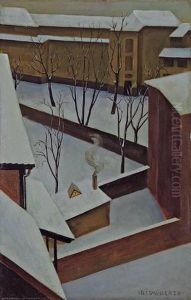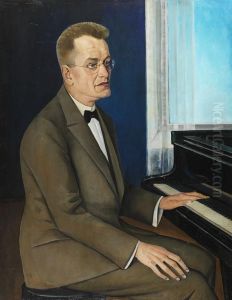August Heitmuller Paintings
August Heitmuller was a German artist born on February 8, 1883, in Hannover, Germany. He was a painter, graphic artist, and art teacher, who contributed significantly to the German expressionist movement. Heitmuller's early education in art was at the Academy of Fine Arts in Munich, where he was influenced by the Jugendstil movement, a German variant of Art Nouveau. His style, however, evolved significantly over the years, primarily under the influence of Expressionism. Heitmuller's work is characterized by bold colors, strong forms, and a deep emotional intensity, reflecting the tumultuous social and political climate of Germany in the early to mid-20th century.
In addition to his painting, Heitmuller was also deeply involved in the art community as an educator. He taught at the School of Arts and Crafts in Hannover, where he influenced a generation of artists with his innovative techniques and expressive use of color. His commitment to education and the arts was evident in his efforts to integrate art into public life, particularly through murals and public art projects.
Despite the rise of the Nazi regime, which branded much of the avant-garde art as 'degenerate,' Heitmuller continued to work and teach, although his opportunities were severely restricted during this period. His works from this era reflect a somber mood, with darker tones and themes of suffering and resilience.
After World War II, Heitmuller's work gained renewed interest as Germany sought to rebuild its cultural identity. He participated in several exhibitions and was honored for his contributions to German art. His legacy includes not only his vibrant paintings but also his influence on the students he taught, many of whom went on to become significant figures in the German art scene.
August Heitmuller passed away on October 14, 1970, leaving behind a body of work that continues to be celebrated for its intensity, emotional depth, and innovative approach to expressionism. His art remains exhibited in various museums and galleries, testament to his enduring impact on the world of art.









